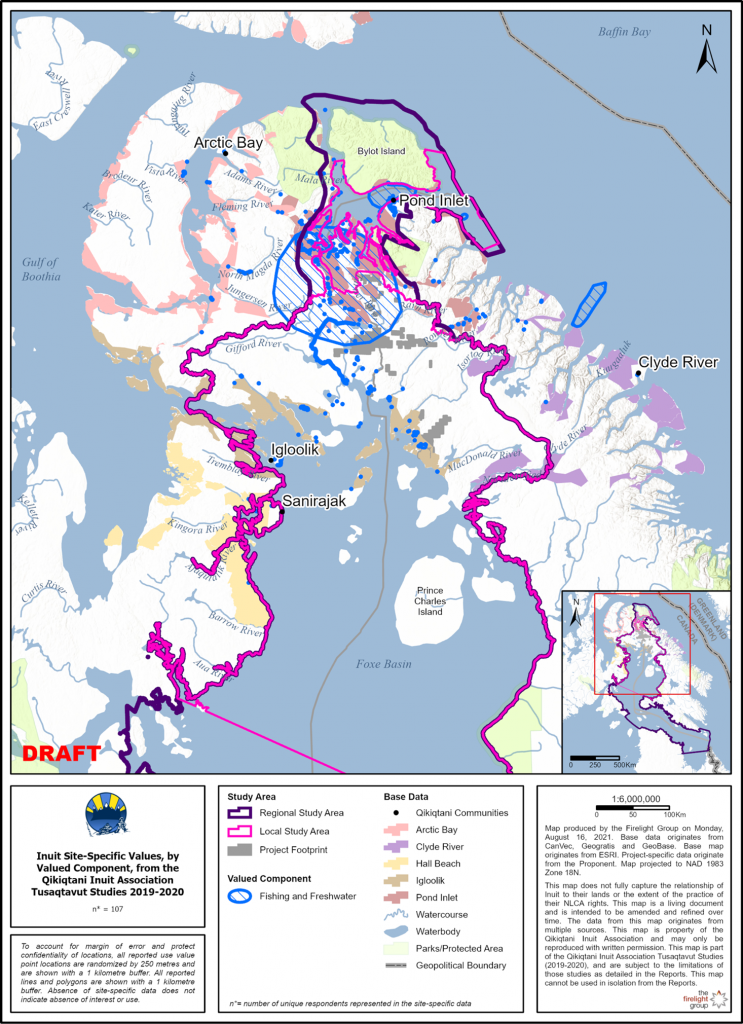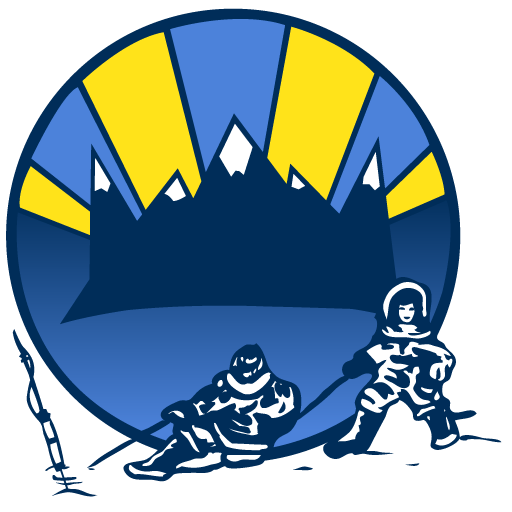FISHING AND FRESHWATER
Fishing is another important cultural activity of the five communities, this includes catching Arctic char in particular, as well as halibut, trout, cod, salmon, and sculpin. Community members shared with us not only fishing sites, but also places where Arctic char are fermented, dried, and stored, and places where people collect clams. Freshwater is also collected from the land.
We heard from community members that freshwater and marine fishing are both important cultural activities. Fishing can be done year-round, and people shared fond memories of fishing around Baffin Island and places where there are an abundance of char. Freshwater fish from lakes and rivers are an important food source.
Community members discussed relying on rivers, streams, ponds, and even tidepools for fishing, tracking fish as they move and spawn. We learned from community members that they like to go back to the fishing areas they know, often setting up camps and places to stay nearby.
Like many other activities on the land and sea, fishing is very social. Community members told us about gathering in large groups to fish. And like other harvesting, fishing uses a specific set of special skills and knowledge which have been developed and learned over time. Community members explained fishing with weirs, spears, sticks, by jigging, and using gill nets. Inuit techniques for processing and preserving fish were also explained to us in detail.
Fish, people, and all animals depend on clean water. Community members emphasised relying on various freshwater sources for drinking water, for cooking, and making camping possible. Inuit identified rivers, springs, and creeks for collecting water, but also highlighted the importance of snow, glaciers, and icebergs for high-quality freshwater.
Important Areas for Fishing and Freshwater
Community members identified fishing spots all around the Mary River Project area, including the Mary River. Members of the Pond Inlet community highlighted, for example, Tugaat Lake, Qinngua, and Treblay Inlet. Arctic Bay and Clyde River community members focused on areas further away from the Mary River Project but also places close to Phillips Creek and the outlet to Milne Inlet. For Iglulik and Sanirajak residents we talked to, the coastline of Baffin Island and eastern Foxe Basin were important places for fishing char and cod. Other places that are important for fishing also include Iqalugasugvik, Ukiuliqsiurvik, and Ikpikitturjuaq. People also showed us places where they collect freshwater for drinking, including from streams, lakes, and springs.
At Tugaat Lake was I was saying the fish tastes like sweet taste and the skin is thin. At Tugaat lake, I was saying this to, its even better, you can eat it but you don’t have heart burn, if you eat too much you get heart burn. But Tugaat Lake you can eat it day after day, day after day and you don’t get heartburn. (P07, 05-Feb-19)
When you drink tea, you don’t get full because it is just water right. But if you use that spring water [on the Mary River] it makes you feel like you had a healthy hearty meal. (P04, 07-Feb-19, interpreted from Inuktitut)

Possible Impacts from the Mary River Project
Community members told us that they are worried about how the Mary River Project could affect fishing and freshwater resources. We heard that the Mary River Project could lead to fewer fish as a result of dust accumulation, and the loss of fish habitat from the construction and operation of mine roads and rails. Fish could also be bothered by vibrations from the construction of mine infrastructure across waterways.
Similarly, community members told us that mining activities could negatively affect the quality of water. Dust from mining and transportation activities (blown by the wind across large distances) is particularly concerning. Community members explained that they do not want to drink water that is close to mining, road, and rail infrastructure. Community members let us know that they would avoid areas contaminated by dust.
We are told not to collect any type of water in these lakes [along the Tote Road]. Any lakes near Mary River because they [Baffinland staff] say it’s contaminated. So we’ve been collecting our water from the mine [tap]. (P15, 07-Feb-19)
If I’ve seen that red, no, I don’t think I would…Like in wintertime, in wintertime we use snow. Just collect up the snow into the bowl or kettle, melt it. And only in winter, yeah. I wouldn’t want to sip tea from that coloured white snow covered with the dust from the ore. (P23, 28-Apr-19)






